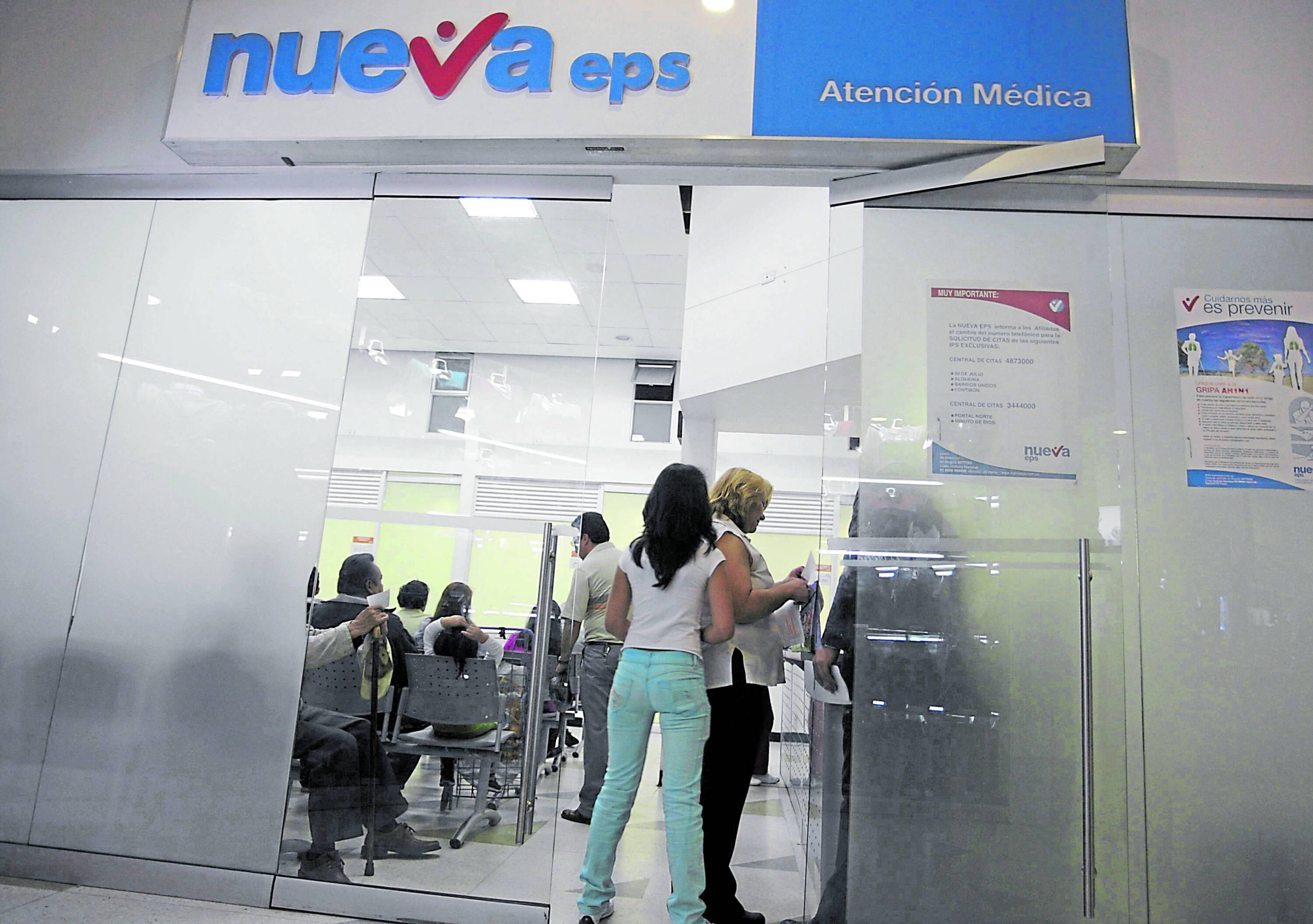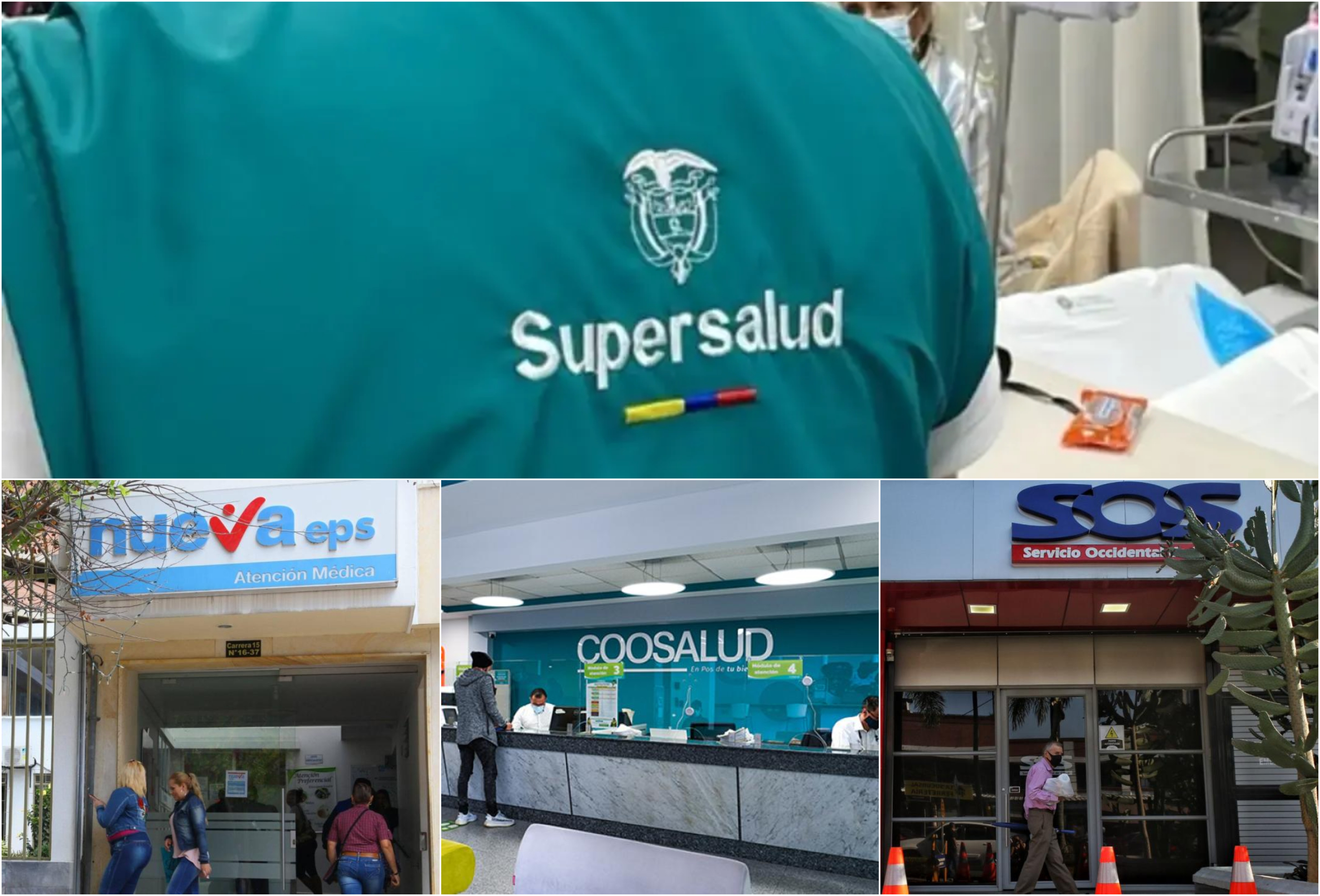The crisis at Nueva EPS, which has been under intervention since 2024, has left more than 11 million members in suspense: clinics and hospitals have stopped providing services.

Since April 3, 2024, Nueva EPS—Colombia's largest health insurance company, with more than 11 million members—has been under government administration through the National Health Superintendency. Almost a year and a half later, its situation is far from improving: the entity hasn't submitted its financial reports for two years, leads the national ranking of user complaints, and has accumulated millions in debt that are already affecting the operation of hospitals and clinics in different regions of the country.
The most recent data reveal the scale of the problem. Between January and July 2025 alone, users filed 295,390 claims against Nueva EPS. Of these, 161,179 were closed, but the fact that the insurer tops the list of claims processes reveals a clear deterioration in its response capacity. The Superintendency, in its technical reports, also highlights that the entity is one of the three with the highest rate of claim reopening, along with Compensar and Emssanar.
The intervention has not brought stability either. During these months, the EPS has had three different interveners, a succession of appointments that experts consider an obstacle to any recovery process. The most recent appointment occurred on August 19, 2025, when the Superintendency of Health appointed new interveners at Nueva EPS, Coosalud, and SOS. But the constant turnover, far from reassuring, has raised new doubts about the management capacity and direction of the entity.

Clinics such as Avidanti, San Rafael, and Primavera have stopped serving their patients. Photo: Mauricio Moreno / EL TIEMPO
The situation in hospitals and clinics is even more alarming. Accumulating debt has led to drastic decisions: suspension of services, temporary closures of emergency care units, and termination of contracts.
In August of this year alone, three healthcare providers announced measures due to the insurer's debts: the Avidanti Clinic in Manizales closed its services to Nueva EPS users due to debts exceeding 171 billion pesos; the San Rafael Clinic in Armenia stopped serving more than half a million members in Quindío and Risaralda due to a debt exceeding 100 billion pesos; and the Primavera Clinic in Villavicencio suspended its emergency department due to a debt of more than 22.945 billion pesos.
Earlier, at the end of June, fourteen hospitals in Caldas warned of the possibility of closing their doors to patients due to outstanding bills exceeding 48 billion euros. Even the Bolivarian University Clinic in Medellín decided to terminate its contract in March of this year, seeing how Nueva EPS's obligations to the institution increased from 19.589 billion to 43.683 billion in less than a year.
The reality is that the country's largest insurance company, which has been intervened and is under state control, is going through its worst period. Not only must it respond to millions of disgruntled members, but it also faces growing distrust from clinics and hospitals, which see their portfolios grow ever larger and see no solutions in sight in a situation where the debts themselves are unclear, which, according to some stakeholders, could exceed four and even five trillion pesos.
A crisis still unmeasured Former Health Minister Augusto Galán Sarmiento asserts that the lack of clear information about Nueva EPS's finances makes it difficult to even grasp the magnitude of the crisis. "The first thing to say is that Nueva EPS's financial situation is currently unclear. Its exact assets are unknown (…) it can be estimated at something that could fluctuate between negative three and four trillion pesos," he explained.
Added to this is the problem of instability in the intervention. For Galán, "recovering that without administrative stability, without corporate governance, without a solid organizational culture (...) casts serious doubt on the future and possible recovery of this New EPS." The constant turnover of intervenors, without a sustained strategy, has made it clear that the intervention, as designed, has not been sufficient. "Those eight or nine intervened entities have similar problems, and those interventions were not useful, they have not served any purpose (...) that is what is being demonstrated," he warned.
The academic also warns of the systemic impact a potential collapse could have. “The risk of the disappearance of the country's largest EPS (…) creates very significant systemic difficulties. The health system and compliance with the constitutional principles of universal coverage, solidarity, and equity in access would be seriously at risk,” he says.

Clinics and hospitals have closed services due to multimillion-dollar debts owed by insurance companies. Photo: Prensa Nueva EPS
For his part, Luis Jorge Hernández, a public health physician and professor at the University of the Andes, agrees that administrative instability has undermined any attempt at recovery. "This constant turnover of auditors generates organizational instability, erodes the institutional culture, and hinders the implementation of long-term strategies," he noted. In his opinion, the lack of financial clarity is an insurmountable obstacle as long as the accounts are not put in order. "Nueva EPS's financial indicators show persistent deterioration, with negative equity and uncertified financial statements for 2023 and 2024," he emphasizes.
But the most serious aspect, Hernández adds, is the growing dissatisfaction among users. “The entity also faces a 30% increase in requests, complaints, and claims in 2024 (358,316 so far this year compared to 277,033 in 2023), reflecting user dissatisfaction and problems in service provision,” he explained. Added to this is a debt with healthcare institutions of around 4.2 trillion pesos, of which 2.2 trillion are in arrears, according to available data. “This indicates a severe liquidity crisis,” he warns.
Hernández emphasizes that if immediate measures are not taken, the consequences would be devastating. “If Nueva EPS fails to stabilize and its portfolio continues to grow, the risks for the country are multiple and serious. This would affect the care of millions of users, particularly in essential services such as primary care, hospitalization, and treatment for chronic diseases,” he emphasizes.

The Superintendency of Health recently made changes to the supervisors of three EPSs. Photo: Superintendency of Health / EL TIEMPO Archive
From the hospital sector, the outlook is even more dramatic. Juan Carlos Giraldo, director of the Colombian Association of Hospitals and Clinics (ACHC), emphasizes that the figures are unsustainable, and that, in fact, the ACHC's calculations are even higher than those used by other sectors. "It's an EPS that alone already has a portfolio figure, along with our IPSs, that already exceeds 5 trillion pesos (...) with growth exceeding 800 billion pesos in the first half of the year and a deterioration in delinquency of 5.5 percentage points," he says.
Giraldo warns that the situation is no longer a future risk, but a tangible reality. “The issue of the portfolio is not just a numerical issue (…) today it is no longer something temporary or a risk, but rather events that are already happening, with closures that greatly hurt us and cause problems in the regions,” he says. And he calls for urgency: “The time of illness is very different from the time of politics and administration. Those who are sick don't have time to wait for all these discussions to take place.”
The three experts' diagnoses coincide on the main points: Nueva EPS is experiencing a liquidity crisis that threatens to overflow, the turnover of auditors has exacerbated administrative instability, and the opacity of its figures prevents decisions based on reliable information.
Meanwhile, clinics and hospitals are forced to close services or suspend patient care, shifting the burden of the crisis directly onto their users. The combination of non-payment to providers, patient dissatisfaction, and opacity in financial reporting has brought the country's largest insurance company to a critical moment. "An intervention without fresh resources is simply buying additional time, but it won't solve the underlying problems," Giraldo concludes.
Environment and Health Journalist
eltiempo





%3Aformat(jpg)%3Aquality(99)%3Awatermark(f.elconfidencial.com%2Ffile%2Fbae%2Feea%2Ffde%2Fbaeeeafde1b3229287b0c008f7602058.png%2C0%2C275%2C1)%2Ff.elconfidencial.com%2Foriginal%2Fea5%2Fa3f%2Fa9c%2Fea5a3fa9c5fe5dc89d4cc192e4bfb5f3.jpg&w=1280&q=100)